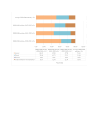Trends and patterns of antimicrobial consumption at Benjamin Mkapa Zonal Referral Hospital, Dodoma, Tanzania: a cross-sectional retrospective analysis
- PMID: 39537568
- PMCID: PMC11574480
- DOI: 10.1136/bmjopen-2023-083842
Trends and patterns of antimicrobial consumption at Benjamin Mkapa Zonal Referral Hospital, Dodoma, Tanzania: a cross-sectional retrospective analysis
Abstract
Objective: This study assessed the trends and patterns of antimicrobial consumption (AMC) from 2020 to 2021, 2021-2022 and 2022-2023 at the Benjamin Mkapa Zonal Referral Hospital (BMH) in Dodoma, Tanzania.
Design: A retrospective cross-sectional study was conducted to collect AMC data for three financial years with respective denominators. The data were computed using the AMC Tool 2019 v1.9.0 and defined daily dose per 1000 inhabitants per day (DID).
Setting: The BMH, Dodoma, Tanzania.
Participants: This study surveyed quantities of antimicrobials procured at the BMH. It did not have any human participants.
Outcome measures: AMC was quantified in DID. The comparisons were made based on the DID of all surveyed antimicrobials, taking into account oral and parenteral administration and based on pharmacological classes. Further, DIDs were presented based on the 2023 WHO Access (A), Watch (W) and Reserve (R) (AWaRe) classification.
Results: In 29 assessed antimicrobials, the DIDs for 2020-2021, 2021-2022 and 2022-2023 were 3.0852, 3.5892 and 3.9213, respectively. The average DID per year was 3.5319, with a mean of 2.4207±1.9765 DID per year. The topmost consumed antimicrobials over the 3 years (doxycycline, azithromycin, amoxicillin/beta-lactamase inhibitors, ampicillin/cloxacillin, amoxicillin/flucloxacillin, ceftriaxone, nitrofurantoin and clarithromycin) account over 90% of consumption. The most highly consumed therapeutic classes were beta-lactam antibacterial penicillins (34.71%), macrolides, lincosamides, streptogramins and others (25.75%), followed by tetracycline (23.88%). The AWaRe categorisation and antimicrobials not recommended (ANR) distribution were as follows: Access-51.61%, Watch-31.96%, Reserve-0.00%, and ANR-16.43%, respectively.
Conclusion: For every 1000 patients attending the BMH per day, our study found 2.4207±1.9765 DIDs of an antimicrobial were consumed. The most consumed antimicrobials include doxycycline, azithromycin, amoxicillin/beta-lactamase inhibitor, ceftriaxone and metronidazole. To combat antimicrobial resistance effectively, it is imperative to institute a hospital policy for antimicrobial stewardship that prioritises the utilisation of a hospital formulary and antibiograms for the procurement of antimicrobials at the BMH.
Keywords: Anti-Bacterial Agents; Clinical audit; Health policy; INFECTIOUS DISEASES; Infectious diseases & infestations; THERAPEUTICS.
© Author(s) (or their employer(s)) 2024. Re-use permitted under CC BY-NC. No commercial re-use. See rights and permissions. Published by BMJ.
Conflict of interest statement
Competing interests: None declared.
Figures


References
-
- World Health Organization GLASS methodology for surveillance of national antimicrobial consumption. 2020. https://iris.who.int/bitstream/handle/10665/336215/9789240012639-eng.pdf... Available.
-
- World Health Organisztion Global Action Plan on Antimicrobial Resistance. Microbe Mag. 2015;10:354–5. doi: 10.1128/microbe.10.354.1. - DOI
-
- The United Repubic of Tanzania, Ministry of Health The national action plan on antimicrobial resistance 2023 -2028. 2023.
MeSH terms
Substances
LinkOut - more resources
Full Text Sources
Medical
Miscellaneous
